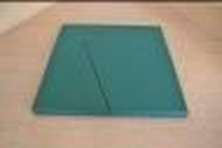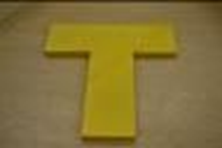Tasks
|
Square-Triangle: Can you combine the four green pieces to form a square? |
|
Square-Triangle: Can you combine the four green pieces to form an equilateral triangle? |
|
The T: Can you combine the four yellow pieces form a big T? Hint: How is the right angle used?
What other shapes can you make? Can you make an arrowhead? |
|
Maths
The square-triangle puzzle is an example of a dissection problem. The idea is to start with one shape, then cut it up into pieces that can be rearranged to make another shape. In this case, if we start with an equilateral triangle, how can we make it into a square using three cuts. The solution is the square-triangle puzzle. We can move between the two solutions if we imagine the pieces on hinges.
 It is not known if we can turn an equilateral triangle into a square using three pieces. It is not known if we can turn an equilateral triangle into a square using three pieces.
The T puzzle consists of four tiles that combine to make a capital T. Although the puzzle only has four pieces, it is very difficult to see the solution. The difficulty comes from the strange 5-sided tile. This tile contains a right-angle, and so it is very tempting to try to fill that notch with one of the other pieces. However, the right-angle is an external angle, where the horizontal and vertical lines of a T meet, and should not be filled.
|
History
The idea of cutting up one shape and rearranging the pieces to make another shape (a dissection puzzle) goes back as far as Ancient Greece, and to philosophers and mathematicians such as Plato and Archimedes. The square-triangle (or haberdasher’s problem) was first proposed by English puzzle author Henry Dudeney in 1902.
Originally, the T puzzle was made as a promotional giveaway for White Rose Ceylon Tea, with the line “Arrange these four pieces as to form a perfect T. White Rose Ceylon is a perfect Tea”. It has remained a popular puzzle ever since.
|
People
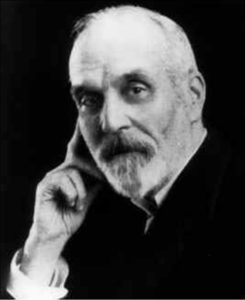 Henry Dudeney 1857 – 1930 Henry Dudeney 1857 – 1930
Henry Dudeney was an author and puzzle creator. He had a puzzle column in The Strand Magazine for 20 years and often collaborated with American puzzle creator Sam Loyd. Dudeney’s most famous puzzle was the Haberdasher’s problem, where he cut an equilateral triangle into four pieces that could be rearranged to make a square. |
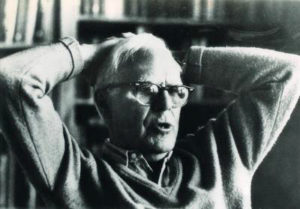 Martin Gardner 1914 – 2010 Martin Gardner 1914 – 2010
Martin Gardner was an author and puzzle enthusiast. He had a puzzle column in the magazine Scientific American for 25 years and inspired many young mathematicians. Gardner wrote about all kinds of puzzles, including dissection puzzles. Of the T puzzle, Gardner said “I know of no polygon-dissection puzzle with as few pieces that is so intractable.” |
|
Applications
Dissection such as these can be used as a visual proof of Pythagoras’ theorem.
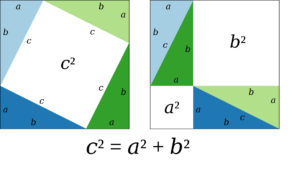 Dissections are also popular with people who like puzzles and contain lots of interesting maths. And even when the puzzle is only for fun, it is still good practice for more serious problems. Dissections are also popular with people who like puzzles and contain lots of interesting maths. And even when the puzzle is only for fun, it is still good practice for more serious problems.
|
Maths at Home
Make the square-triangle puzzle at home. Download and print this pdf.
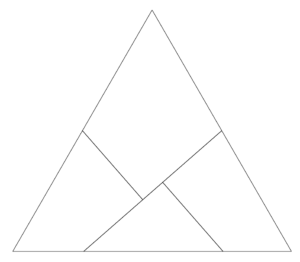
How could you explain the dissection of the equilateral triangle to someone who can’t see the image?
Make the T puzzle at home. Download and print this pdf.
Use the pieces to create other shapes. Can you make an arrow? What about another geometric shape like a trapezoid or a parallelogram? Here are some other shapes to try.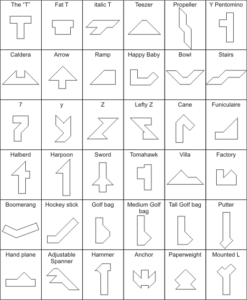
If you are struggling to make any of these shapes, here are the solutions.
|

